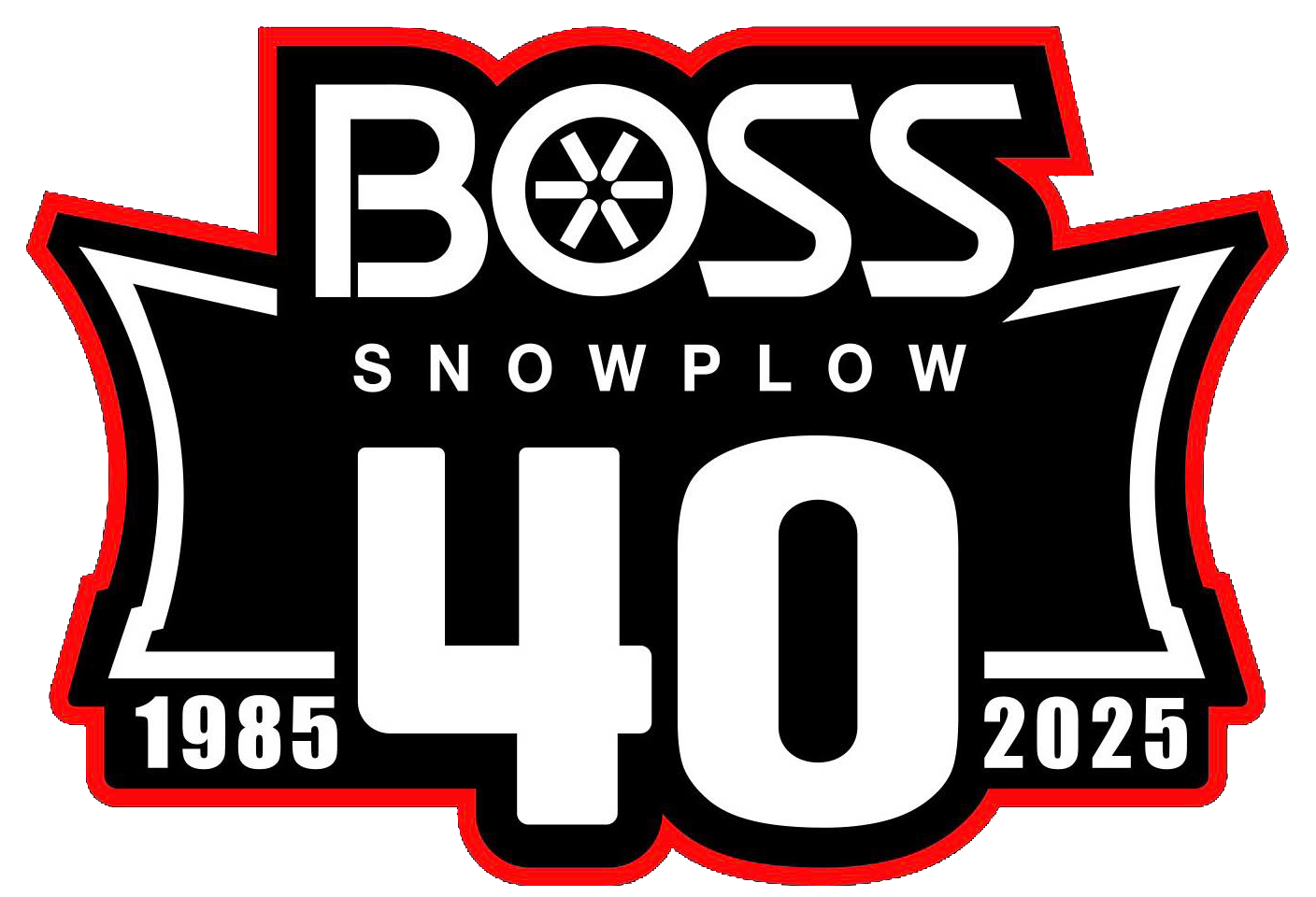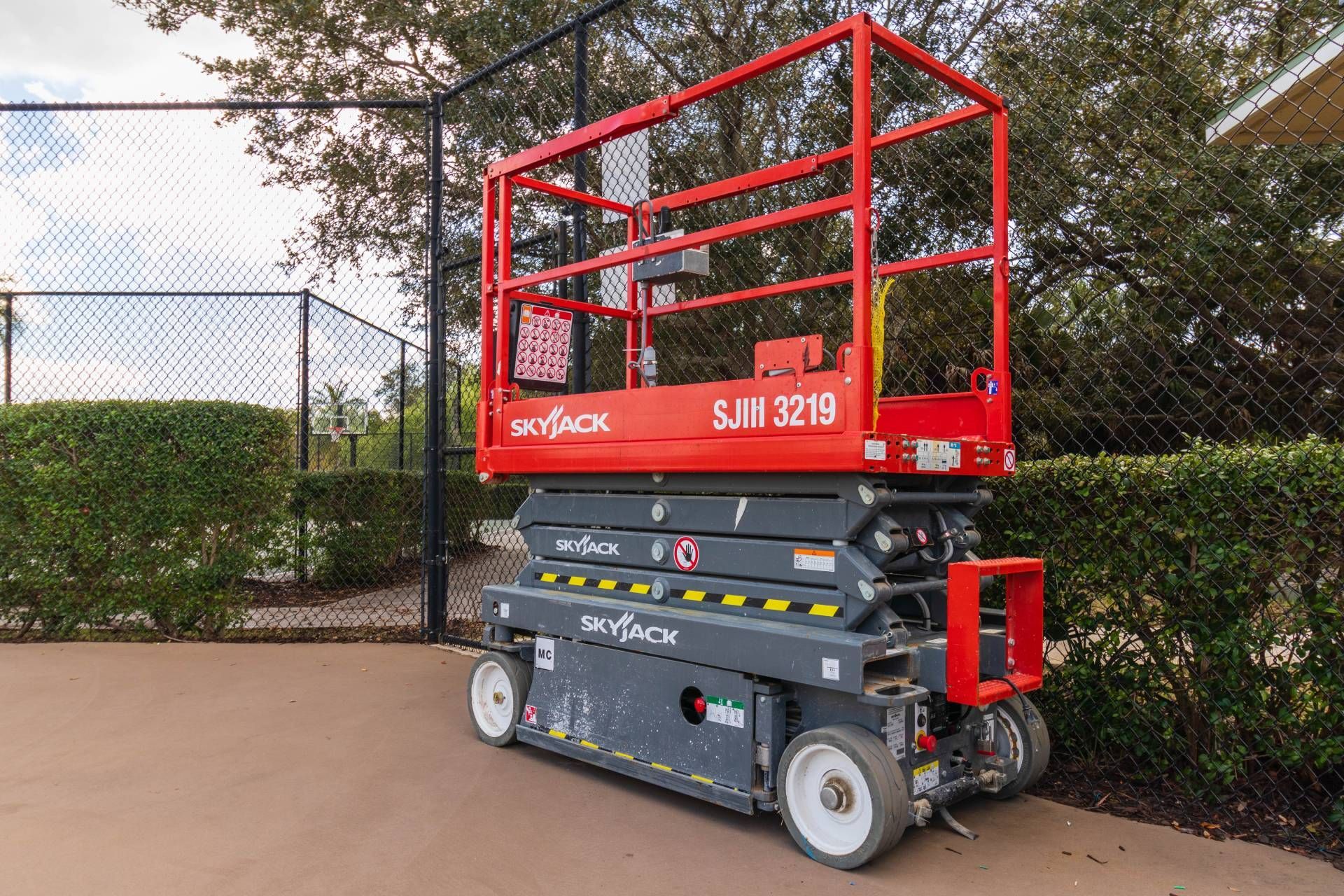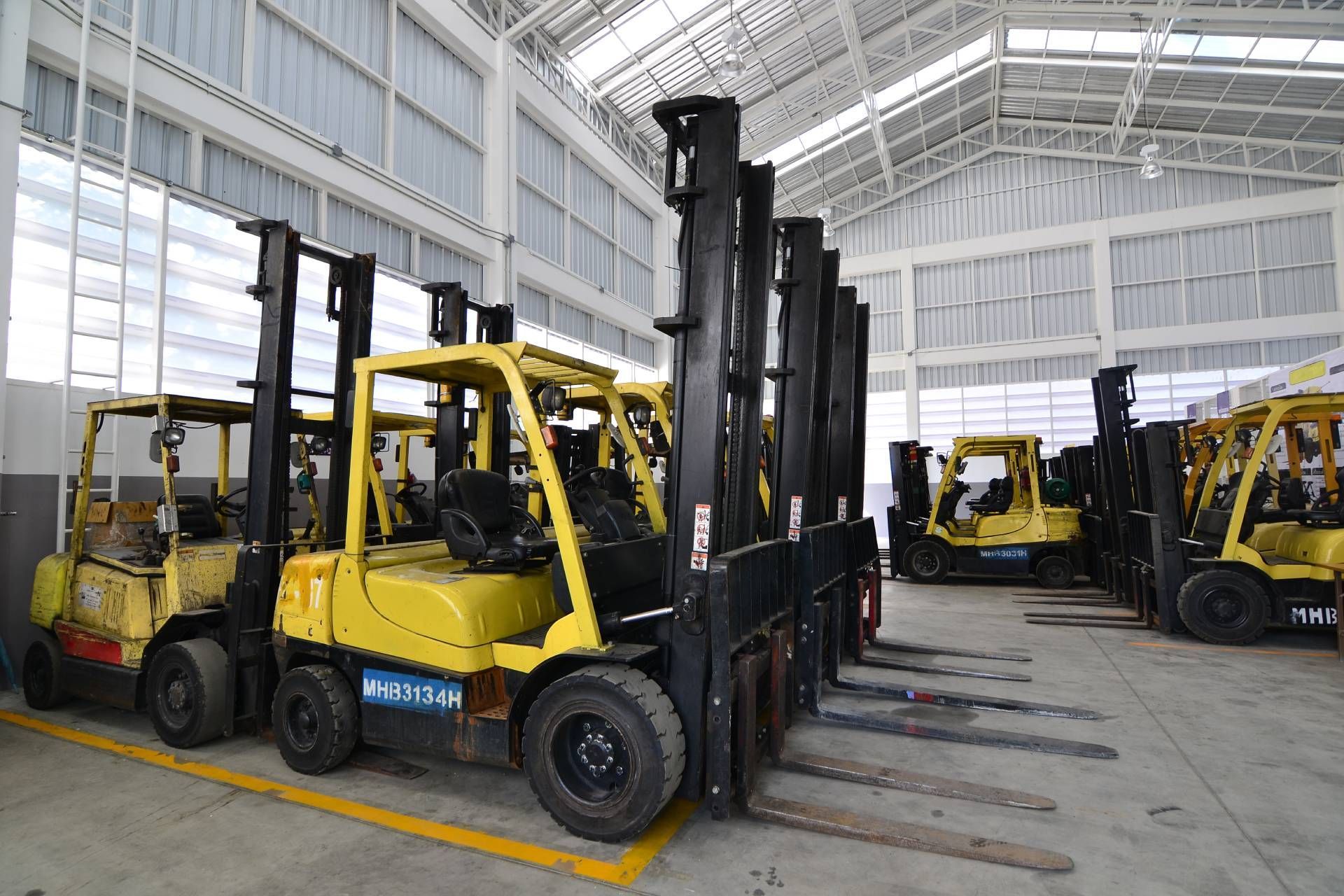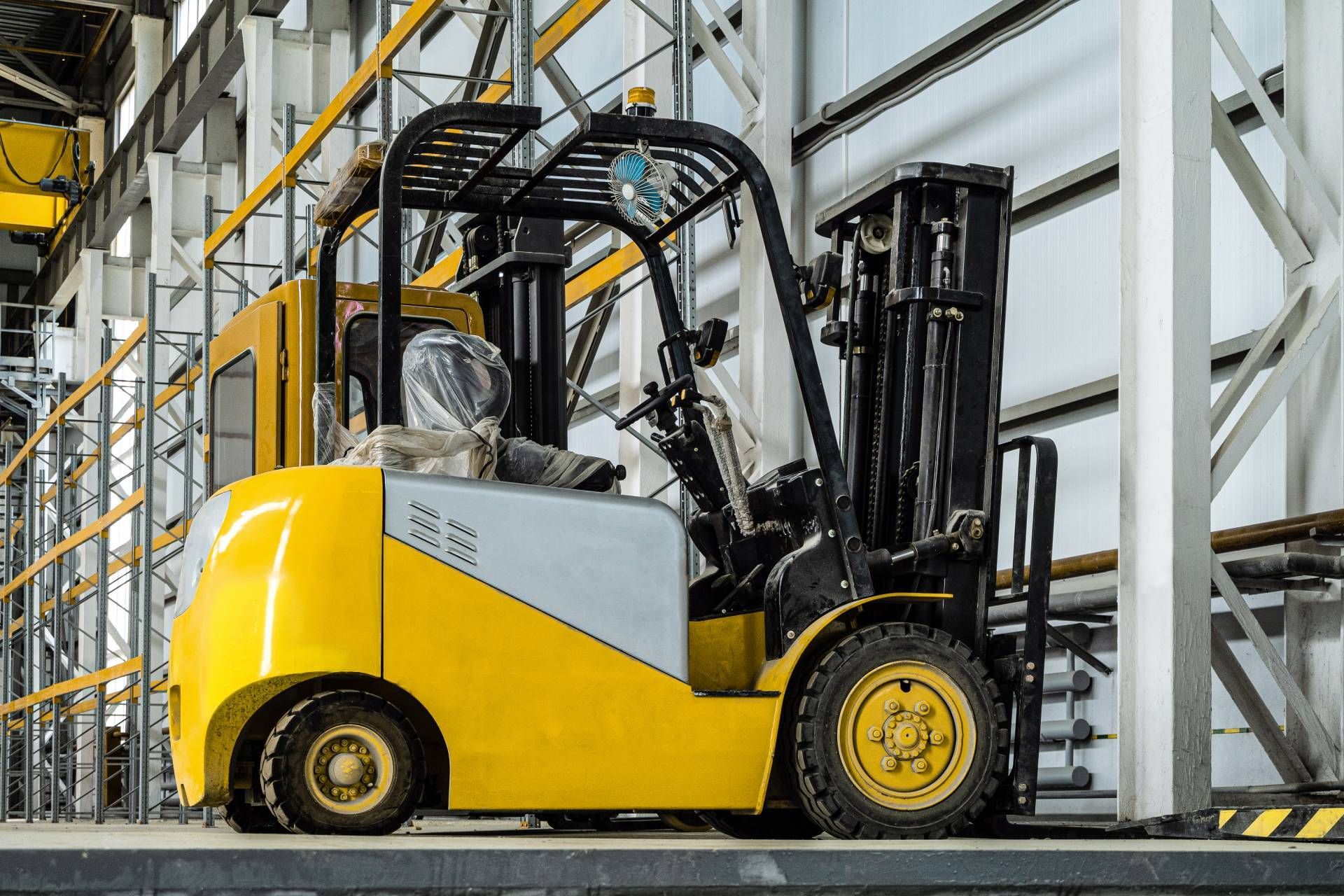Lifts, Access & Material Handling in Newport, MN
Access Lifts for Indoor and Outdoor Work
Scissor Lifts for Slab or Rough Terrain
Scissor lifts provide straight-up access with roomy platforms for two-person tasks and materials. Electric units fit indoor slab work—retail buildouts, warehouse lighting, and ceiling repairs—with non-marking tires and compact footprints for tight aisles. Rough-terrain scissors add wider decks, higher capacities, and stabilizers for exterior jobs on firm, graded surfaces. When planning, confirm working height (platform height plus the average user’s reach), aisle width, and doorway clearances from the loading point to the work zone.
Articulating and Telescopic Boom Lifts
Where obstacles block a straight path, an articulating boom reaches up and over signage, awnings, trees, or conveyors. Telescopic booms excel at long, direct reaches along building façades and site perimeters. Match boom type to your path and target: if you need to clear a parapet and land on a roofline, articulating geometry saves time; if you’re running a straight line across a façade, a telescopic stick keeps the platform stable and predictable.
Personnel Lifts and Towable Options
Single-mast personnel lifts roll through standard doors and set quickly for one-tech service calls. Towable booms offer practical reach for property managers and small contractors who prefer a hitch-and-go setup behind a properly rated vehicle. Plan outriggers on flat, firm ground and verify the tow vehicle’s capacity before pickup.
Forklifts, Telehandlers, and Pallet Movement
Warehouse Forklifts (Electric and LP)
Counterbalance forklifts handle palletized freight, fixtures, and bulk materials in warehouses and shops around Newport, MN. Electric models suit indoor air requirements and tighter turning radii; LP units provide quick refueling and durable performance in mixed indoor/outdoor use. Confirm mast height for door headers, sprinkler mains, and mezzanines; low-overhead masts reduce surprises at interior thresholds.
Telehandlers for Outdoor Reach and Setbacks
Telehandlers place pallets over sod, gravel, or unfinished base where slab machines can’t drive. Choose by required lift height, forward reach, and capacity at reach—not just base capacity. If you’re setting rooftop units or staging masonry near setbacks, a stabilizing pad and a clearly marked landing zone speed placement and keep traffic flowing.
Pallet Jacks, Walkie Stackers, and Attachments
Manual pallet jacks solve quick moves in tight aisles; powered walkies and stackers add lift for short-stack storage. Attachments—fork extensions, sideshifters, carpet poles, or drum grabs—adapt a single truck to varied loads. When in doubt, measure the load center and width; proper attachment plus rated capacity prevents mast or chain stress during lifts.
Material Lifts, Hoists, and Move-In Tools
Material Lifts for HVAC, Beams, and Fixtures
Portable material lifts raise equipment, headers, and sign cabinets without a full forklift. Choose column height and load rating to match the piece and the install plane, then confirm ceiling height for tilt-up. For storefronts along Hastings Ave or warehouse corridors, a narrow base slides through doors and positions directly under the set point.
Chain Hoists, Come-Alongs, Skates, and Dollies
When a fixture must travel a few feet before going up, machine skates, dollies, and pry bars bridge the gap to the lift point. Chain hoists or come-alongs manage controlled raises under a beam clamp or spreader bar. Protect floors with plates or plywood and keep the load path clear before you tension the line.
Racking, Mezzanines, and Light Assembly Moves
Light-duty moves inside existing racking or mezzanine zones often combine a short forklift lift with a final set using a material lift or hoist. Mark transfer points, keep spotters visible to the operator, and stage pallets so forks can withdraw without dragging packaging into posts or sprinkler lines.
Site Planning, Power, and Floor Conditions
Clearances, Floor Loading, and Turning Space
Measure the route from curb to work area—door heights, ramp grades, sprinkler mains, and mezzanine struts. For indoor lifts, verify slab rating and avoid point-loading near joints. On polished floors, plan gentle steering inputs to prevent scuffing; on pavers or asphalt in summer, use ground protection to limit imprinting.
Power, Charging, and Ventilation
Electric scissor lifts and forklifts require dedicated circuits for overnight charging. Place chargers away from pedestrian routes and confirm cord protection. For LP or diesel units, maintain ventilation and keep doors or make-up air open during extended runs.
Weather, Wind, and Surface Protection
Outdoor work must account for wind limits, surface pitch, and ground firmness. If gusts are forecast, schedule early shifts or switch to tasks under wind thresholds. Rough-terrain lifts still need graded pads; outriggers require firm, level contact with cribbing where specified.
Access, Delivery, and Routing in Newport
Tight downtown alleys, HOA gates, or park access roads change equipment choice and delivery timing. Share gate codes, bridge weight limits, and truck turning radii when you request a quote. For multi-tenant sites, coordinate staging so dock doors and fire lanes remain open while equipment arrives and departs.
Safety, Operation, and Daily Checks
Operator Qualification and Familiarization
Operators must be trained and familiar with the specific model in use. Review controls at hand-off, confirm emergency lowering procedures, and keep manuals with the machine. If your crew rotates, assign a point person to brief each operator before they elevate.
Pre-Use Inspection and Function Tests
Before the first lift, check tires or tracks, guardrails, gates, tilt sensors, platform entry chains, and control interlocks. Function-test steer, lift, and drive at low height, then verify alarms and tilt indicators. For forklifts, inspect forks for cracks, chain tension, and mast rollers.
Fall Protection, Stability, and Spotters
Where required, use approved anchor points and lanyards; never tie to adjacent structures. Keep loads within rated capacity and centered on the platform or forks. On active sites, spotters manage traffic and keep pedestrians outside swing radius or fork paths.
Parking, Charging, and End-of-Day Securing
Lower platforms, set brakes, remove keys, and place cones where equipment remains overnight. Coil cords off walking paths and plug chargers into designated circuits. For street-side or shared lots, add barricades and lighting so equipment is visible after dark.
Booking, Delivery, and Returns in Newport, MN
Quotes, Availability, and Height Targets
Provide working height, task type, and surface conditions, and note any aisle or door constraints. If you’re unsure between an articulating boom and a scissor, describe the obstacle you must clear; the right geometry prevents re-staging.
Scheduling and Permits
Some exterior lifts near sidewalks or streets may require permits or traffic control. We’ll outline the equipment footprint so you can coordinate approvals with the city or property manager before the delivery window.
Delivery, Pickup, and Site Readiness
For Newport and nearby communities—Cottage Grove, South St. Paul, and Woodbury—delivery windows are timed to when access opens. Keep staging areas free of parked vehicles and pallets so the truck can unload safely, and confirm a clear return path at pickup.
Cleaning, Fuel/Charge, and Damage Notes
Electric units should be returned on charge; LP or diesel fuel levels are noted on the rental agreement. Brush debris from decks, check for packaging lodged in scissor stacks, and cap hydraulic quick-connects on any removed attachments before return. Report scuffs or impacts so follow-up inspections can be completed quickly.
Contact Us Today!
South Suburban Rental supplies Newport, MN with scissor and boom lifts, forklifts and telehandlers, pallet movement tools, and portable material lifts that fit real site constraints. Share your height, reach, load, and access details, and we’ll match equipment that works from the first setup to final set-down—without guesswork in the aisles or on the slab.




